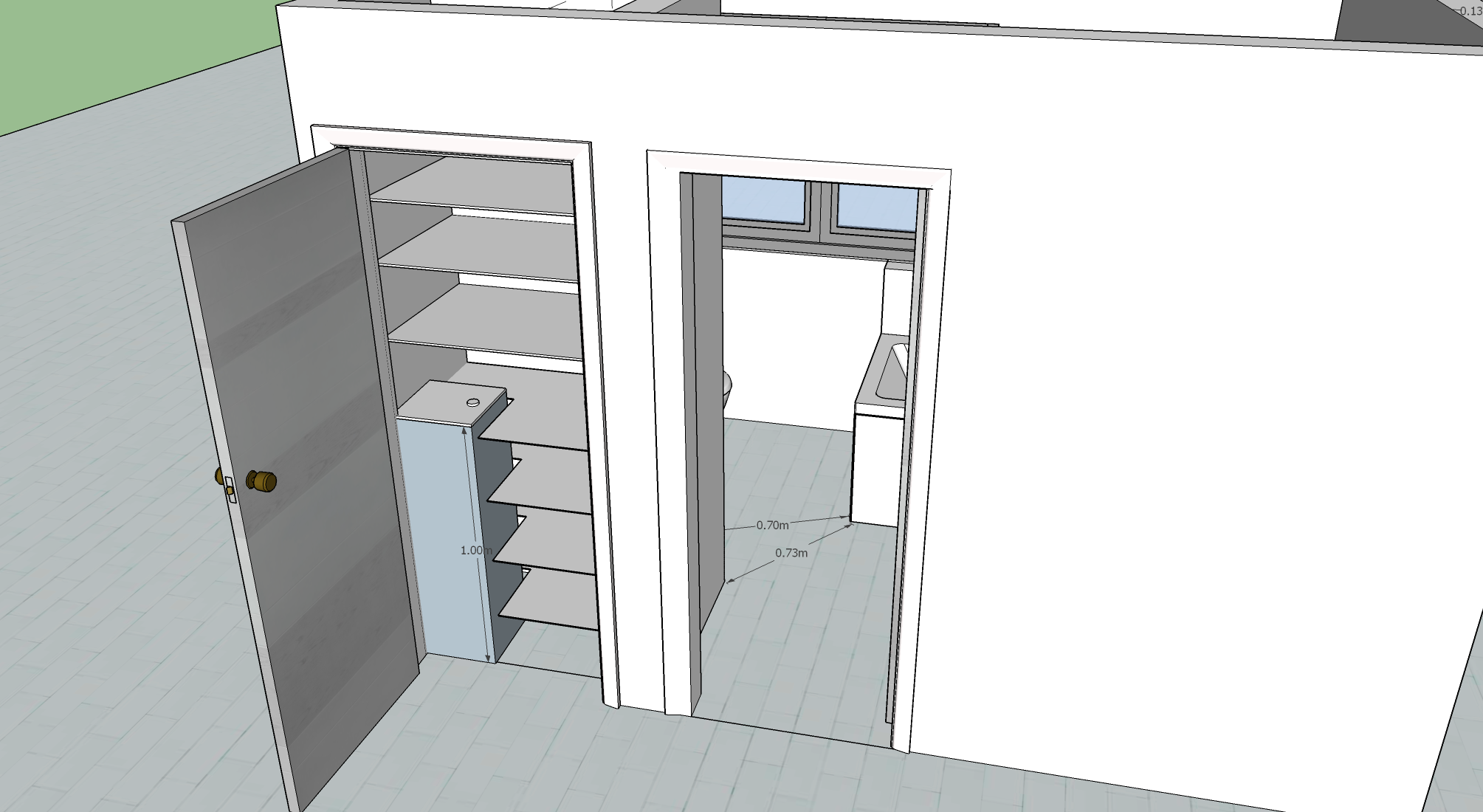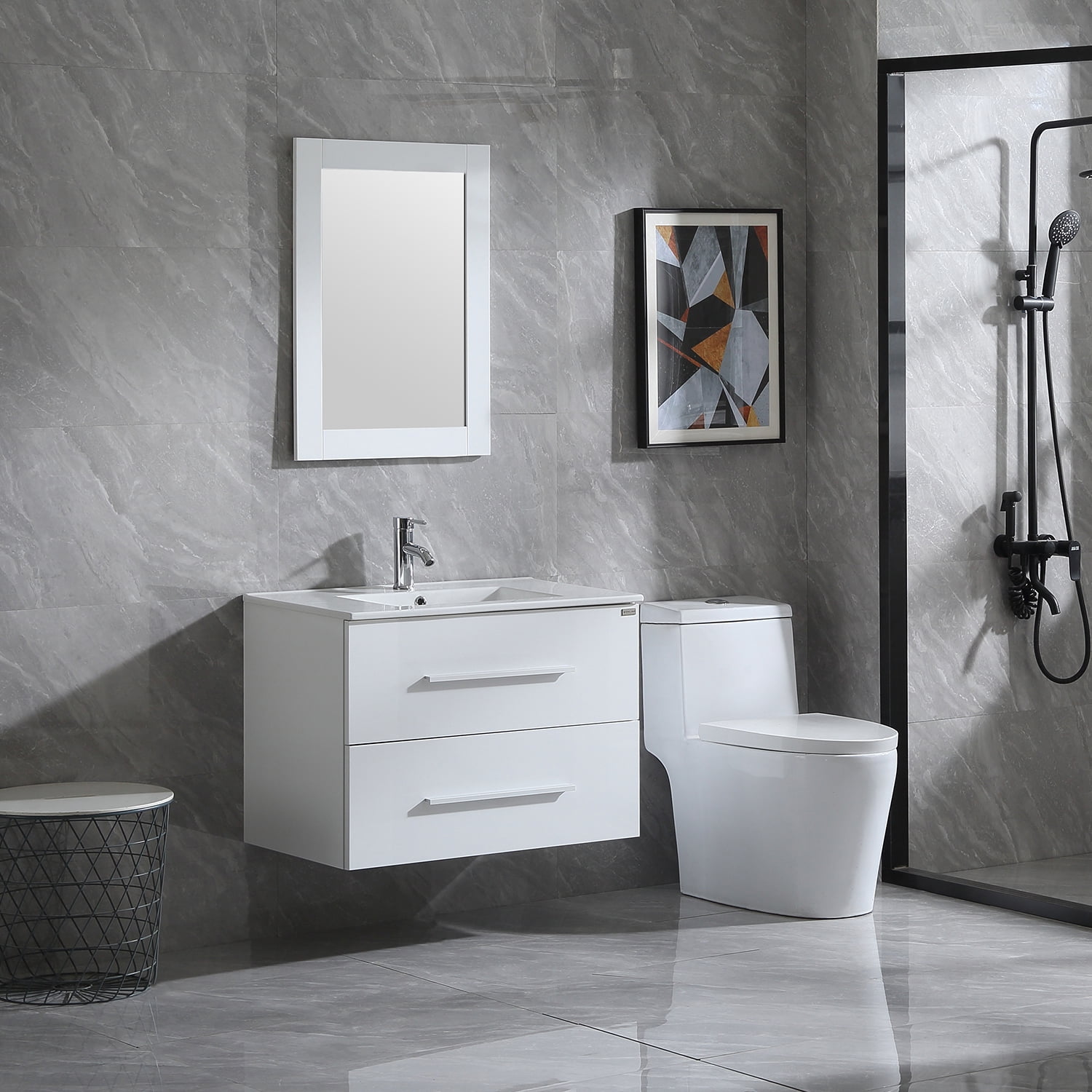Bathroom Vanity with Laundry Chute

A bathroom vanity with a laundry chute can be a practical and stylish addition to any home. Integrating a laundry chute into a bathroom vanity requires careful planning and consideration of various design elements. The right design can create a seamless and functional space, while a poorly planned one can lead to aesthetic and practical issues.
Types of Laundry Chutes
Laundry chutes come in various types, each with its own advantages and disadvantages. Choosing the right type depends on the bathroom’s layout, space constraints, and personal preferences.
- Vertical Chutes: These are the most common type of laundry chutes. They run vertically from the bathroom to the laundry room, typically installed within a wall or closet. Vertical chutes are ideal for multi-story homes, as they allow for easy access from multiple levels.
- Horizontal Chutes: These chutes run horizontally, often installed beneath the floor. They are suitable for single-story homes where the laundry room is adjacent to the bathroom. Horizontal chutes can be more discreet, as they are hidden from view.
- Combination Chutes: These chutes combine vertical and horizontal sections, allowing for flexibility in installation. They are suitable for homes with unique layouts or where space is limited.
Design Considerations for Integrating a Laundry Chute
The following design considerations are crucial for seamlessly integrating a laundry chute into a bathroom vanity:
- Location of the Chute: The location of the chute should be carefully considered. It should be easily accessible from the bathroom, but also discreet and aesthetically pleasing. A common location is within a vanity cabinet, where it can be concealed behind a door or panel.
- Size and Shape of the Chute: The size and shape of the chute should be proportionate to the vanity and the volume of laundry it needs to accommodate. A larger chute may be required for families with multiple laundry loads.
- Material and Finish: The material and finish of the chute should match the overall style of the bathroom vanity. Materials like stainless steel, galvanized steel, or PVC are commonly used for laundry chutes. The finish can be chosen to complement the bathroom’s color scheme and design.
- Soundproofing: Laundry chutes can generate noise when in use. Soundproofing measures should be incorporated to minimize noise transfer to other areas of the home. This can involve using sound-absorbing materials, such as insulation or acoustic panels, within the chute itself.
- Safety Features: Safety features should be incorporated into the design of the laundry chute to prevent accidents. This can include a safety lid to prevent items from falling out of the chute, as well as a fire-resistant lining to minimize the risk of fire hazards.
Examples of Bathroom Vanity Designs with Laundry Chutes
Many modern bathroom vanity designs seamlessly integrate a laundry chute. Here are some examples:
- A contemporary bathroom vanity with a built-in laundry chute concealed behind a sliding door. The door seamlessly blends with the vanity’s design, creating a minimalist and stylish look.
- A traditional bathroom vanity with a laundry chute hidden behind a decorative panel. The panel can be designed to match the vanity’s style, providing a discreet and elegant solution.
- A minimalist bathroom vanity with a laundry chute integrated into the countertop. The chute is hidden under a sleek countertop, creating a seamless and modern look.
Step-by-Step Guide to Designing a Bathroom Vanity with a Laundry Chute
Here is a step-by-step guide to designing a bathroom vanity with a laundry chute:
- Determine the size and layout of the bathroom vanity. This will depend on the available space and the desired functionality.
- Choose the location of the laundry chute. Consider accessibility, aesthetics, and the overall layout of the bathroom.
- Select the type of laundry chute. Choose a chute that is suitable for the bathroom’s layout and the volume of laundry it needs to accommodate.
- Design the vanity around the laundry chute. Ensure that the chute is integrated seamlessly into the vanity’s design and that it does not compromise the functionality of the vanity.
- Select the materials and finish for the vanity and the chute. Choose materials and finishes that complement the overall style of the bathroom.
- Incorporate soundproofing measures. This will help to minimize noise transfer to other areas of the home.
- Include safety features. This will help to prevent accidents and ensure the safety of the users.
Materials and Finishes for Bathroom Vanities and Laundry Chutes, Bathroom vanity with laundry chute
The materials and finishes chosen for the bathroom vanity and the laundry chute should complement each other and the overall style of the bathroom.
- Vanity Materials: Popular materials for bathroom vanities include wood, laminate, acrylic, and stone. Wood offers a classic and warm look, while laminate is durable and affordable. Acrylic is easy to clean and maintain, while stone adds a touch of elegance.
- Vanity Finishes: The finish of the vanity can be chosen to complement the overall style of the bathroom. Popular finishes include painted, stained, lacquered, and polished. The choice of finish will depend on the material of the vanity and the desired aesthetic.
- Laundry Chute Materials: Common materials for laundry chutes include stainless steel, galvanized steel, and PVC. Stainless steel is durable and corrosion-resistant, while galvanized steel is more affordable. PVC is lightweight and easy to install.
- Laundry Chute Finishes: The finish of the laundry chute should match the overall style of the bathroom vanity. Popular finishes include polished, brushed, and powder-coated. The choice of finish will depend on the material of the chute and the desired aesthetic.
Functionality and Convenience of a Bathroom Laundry Chute: Bathroom Vanity With Laundry Chute

A bathroom laundry chute, a vertical conduit connecting a bathroom to a laundry room or a lower floor, offers a unique solution for streamlining laundry routines. Its functionality and convenience can significantly enhance the overall living experience, particularly in multi-story homes.
Advantages and Disadvantages of a Bathroom Laundry Chute
The inclusion of a laundry chute in a bathroom presents both advantages and disadvantages that should be carefully considered.
Advantages
- Effortless Laundry Transport: Laundry chutes eliminate the need to carry dirty clothes to a separate laundry room, simplifying the laundry process. This is particularly beneficial for those living in multi-story homes, as it eliminates the need to climb stairs with laundry baskets.
- Time Efficiency: With a laundry chute, the process of sorting and dropping laundry becomes much faster, allowing individuals to focus on other tasks.
- Enhanced Convenience: A laundry chute provides a convenient and discreet way to dispose of dirty clothes, especially for individuals who prefer to avoid the hassle of carrying laundry baskets through the house.
- Improved Hygiene: A laundry chute helps to maintain a clean and tidy bathroom environment by preventing the accumulation of dirty laundry in the bathroom.
Disadvantages
- Installation Cost: Installing a laundry chute can be a significant investment, requiring structural modifications and professional installation.
- Potential for Noise: Depending on the design and installation, laundry chutes can generate noise as laundry items fall through the chute.
- Limited Capacity: Laundry chutes typically have a limited capacity, making them less suitable for large families or those who generate a significant amount of laundry.
- Maintenance: Laundry chutes require regular cleaning and maintenance to prevent clogs and ensure smooth operation.
How a Laundry Chute Enhances Bathroom Functionality and Convenience
A laundry chute can significantly enhance the functionality and convenience of a bathroom by simplifying laundry routines and maximizing space efficiency.
Streamlined Laundry Process
The presence of a laundry chute streamlines the laundry process by eliminating the need for manual transport of dirty clothes. This eliminates the hassle of carrying laundry baskets up and down stairs, saving time and effort.
Space Optimization
By eliminating the need for laundry baskets in the bathroom, a laundry chute frees up valuable floor space. This allows for more efficient use of the bathroom area and creates a more spacious and uncluttered environment.
Real-Life Examples of How a Laundry Chute Simplifies Laundry Routines
A family living in a three-story home found that a laundry chute in their master bathroom greatly simplified their laundry routine. Instead of carrying laundry baskets up and down the stairs, they could simply drop their dirty clothes into the chute, which transported them directly to the laundry room on the lower level.
Tips for Maximizing the Efficiency of a Bathroom Laundry Chute
To maximize the efficiency of a bathroom laundry chute, consider these tips:
Proper Sizing
Choose a laundry chute that is appropriately sized for the volume of laundry generated by the household.
Regular Cleaning
Regularly clean the laundry chute to prevent clogs and ensure smooth operation.
Use a Laundry Bag
Consider using a laundry bag to contain laundry items and prevent them from getting caught or stuck in the chute.
Comparing the Convenience of a Bathroom Laundry Chute to Traditional Laundry Methods
Compared to traditional laundry methods, a bathroom laundry chute offers significant convenience. The elimination of manual laundry transport and the ease of dropping laundry directly into the chute saves time and effort, particularly for those living in multi-story homes.
Installation and Maintenance of a Bathroom Laundry Chute

Installing a laundry chute in a bathroom vanity can be a great way to streamline your laundry process and keep your bathroom tidy. However, it’s essential to understand the intricacies of the installation and maintenance process to ensure a smooth and long-lasting experience.
Installation Methods
Choosing the right installation method for your laundry chute is crucial. It depends on factors like your home’s structure, budget, and desired level of complexity.
- Direct Drop: This method is the simplest, involving a straight chute from the bathroom vanity down to the laundry room. It’s suitable for single-story homes with a direct path.
- Indirect Drop: This method involves a chute that travels through the attic or crawl space before reaching the laundry room. It’s useful for multi-story homes or when a direct path is not available.
- Wall-Mounted: This method involves installing the chute along a wall, making it suitable for homes with limited space or where a direct drop is not possible.
Ventilation and Safety
Proper ventilation is essential for preventing moisture build-up and odors in your laundry chute. During installation, consider the following:
- Install a vent fan: This helps to circulate air and remove moisture.
- Use a fire-rated chute: This minimizes the risk of fire spreading in case of an accident.
- Install a safety latch: This prevents accidental falls and ensures safe operation.
Maintenance
Regular maintenance is key to ensuring your laundry chute functions smoothly and lasts for years to come.
- Clean the chute regularly: This prevents lint and debris build-up, which can hinder its operation.
- Inspect for damage: Check for any cracks, tears, or loose parts that may need repair.
- Lubricate moving parts: This helps to ensure smooth operation and reduces wear and tear.
Troubleshooting Common Issues
Occasionally, you might encounter issues with your laundry chute. Here are some common problems and solutions:
- Clogging: Clean the chute thoroughly with a brush or vacuum cleaner.
- Noise: Lubricate moving parts or check for loose connections.
- Leaks: Inspect the chute for cracks or leaks and repair as needed.
